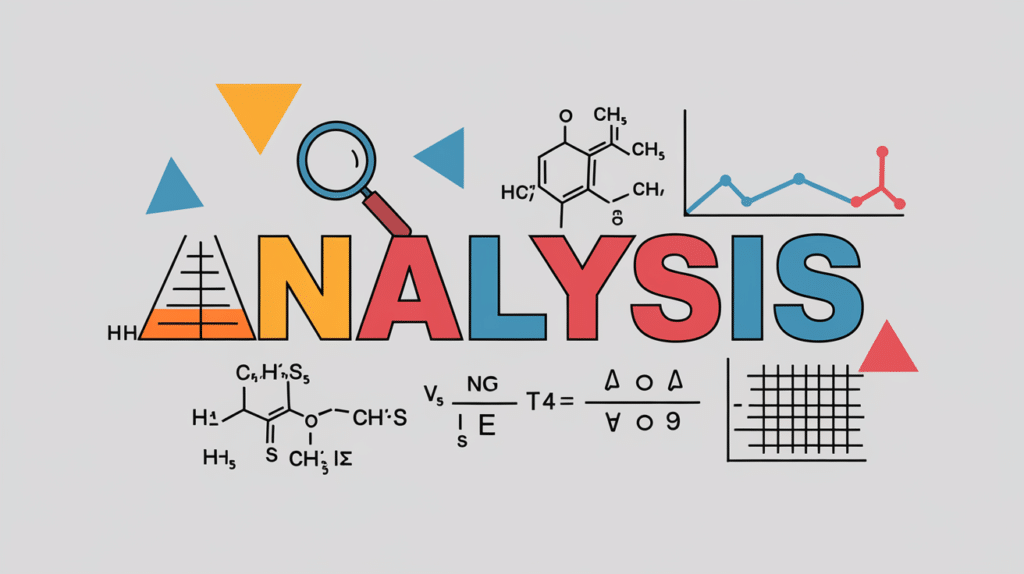Understanding the plural of analysis can feel tricky, especially if English grammar isn’t your favorite subject. But mastering this word’s usage is essential for anyone involved in academic writing, professional documents, or even casual communication. The word “analysis” comes from ancient Greek roots, and its plural form, “analyses,” doesn’t follow the usual rules of adding an “s” or “es.”
In this comprehensive guide, we’ll break down everything you need to know about this irregular plural. From its Greek origin to how it’s used in scientific analyses, we’ll make sure you’re never confused about when to use “analysis” versus “analyses.” Let’s dive into the fascinating world of this irregular word and explore its role in scholarly writing, research papers, and even everyday language.
Analyzing The Plural of Analysis; A Comprehensive Guide
The word “analysis” is a noun that refers to a detailed or systematic study of something. It could be anything from a genomic breakdown in science to a fiscal analysis in economics. However, the plural of “analysis” is “analyses.” Unlike regular plurals, which simply add “-s,” this change reflects its Greek etymology, where words often undergo structural changes when pluralized.
The grammatical plural rule here is a bit special. For example, in English, the singular “analysis” becomes “analyses,” following a pattern similar to words like “crisis” (plural: crises) and “thesis” (plural: theses). These changes can be traced back to the Greek language, where plural forms often include an “-es” ending. This rule helps maintain the word’s connection to its linguistic roots and its original meaning in classical studies.
Ever Wondered or Asked Why?
Why does the plural form of analysis behave this way? The answer lies in its history. The word “analysis” comes from the Greek term “analusis,” which means “a breaking down.” Over time, as the word was adopted into Latin and later into English, it retained some of its Greek grammar rules. This is why the plural form involves more than just adding an “s.”
Think of this rule as a nod to its Greek origin. English borrows heavily from other languages, and many irregular plurals, such as “phenomenon/phenomena” and “criterion/criteria,” follow similar patterns. These irregularities can make English grammar complex, but they also add depth and richness to the language.
So, How Do We Use These Beastly “Analyses”?
Using “analysis” and “analyses” correctly is all about context. If you’re talking about one thorough examination, like a molecular analysis or a critical breakdown of a book, you’d use the singular form. But when referring to multiple studies or a collection of analyses, the plural form “analyses” is the right choice.
For example, “Her financial analyses helped the company save millions” uses the plural form because it refers to multiple evaluations. On the other hand, “The analysis of the data revealed surprising results” uses the singular form to describe one in-depth review. Proper usage is key in academic writing, as using the wrong form can make your work seem less professional.

Are You Feeling Overwhelmed? Here’s a Little Memory Trick
It’s easy to get confused, but here’s a simple trick: when you see “-es” at the end, think of a series of studies or multiple pieces of work. The singular “analysis” describes one detailed breakdown, while the plural “analyses” represents a group of breakdowns or evaluations.
For instance, imagine you’re holding a bouquet of flowers. Each flower represents an “analysis.” Together, the bouquet represents “analyses.” This visual can help you remember that the plural form refers to many individual studies or breakdowns combined.
Let’s Get Things More Fancy Here
In scientific analyses, such as those in biology, chemistry, or medicine, the plural form appears frequently. For example, DNA analyses or genomic breakdowns involve studying multiple samples or datasets. In economics, market analyses or fiscal breakdowns examine trends across different periods or regions.
Even in literature, a collection of analyses might explore themes in a novel or compare works from different authors. These examples highlight how the plural form connects to fields requiring multiple evaluations or interpretations. Whether you’re writing about economic reviews or biological studies, understanding the plural form ensures your work is grammatically correct and polished.
Here Are More Fun Facts About “Analysis”
The word “analysis” has a fascinating history. Derived from Greek etymology, it originally meant “loosening up” or “releasing.” Over time, it evolved to mean “breaking something down into parts.” This shift reflects its use in fields like science, where dissecting complex problems is essential.
Did you know that psychoanalysis, a term popularized by Freud, also shares the same root? Other fields like linguistics, chemistry, and economics use “analysis” extensively. Whether it’s a chemical analysis identifying compounds or a psychoanalysis process exploring the mind, this word plays a vital role in describing systematic studies across disciplines.
Analysis
Definition:
The word “analysis” refers to the process of examining something in detail. It’s often used in professional documents to describe an organized effort to understand complex issues.
Examples in Sentences:
Word History
The word “analysis” comes from the Greek word “analusis,” which combines “ana-” (up) and “lysis” (loosening). This original meaning of “loosening up” reflects the process of breaking things down into simpler components. As the term was adopted by Latin and then English, it retained its core meaning while expanding into fields like scientific studies, linguistic evaluations, and financial models.
Phrases Containing Analysis
Some common phrases include:
- Root-cause analysis: Used in problem-solving to identify the underlying issue.
- SWOT analysis: A tool in business to evaluate strengths, weaknesses, opportunities, and threats.
- Market analysis: A study of economic trends and consumer behavior.
Analyses vs. Analysis
The singular and plural forms of this word are easy to mix up. To clarify:
| Word Form | Definition | Example |
|---|---|---|
| Analysis | Singular; one study or breakdown | “This analysis focuses on the economy.” |
| Analyses | Plural; multiple studies or breakdowns | “The analyses covered several markets.” |
What Are Irregular Plurals?
Irregular plurals don’t follow the typical rule of adding “-s” or “-es.” Words like synthesis (syntheses), thesis (theses), and analysis (analyses) come from Greek grammar, where plural forms often involve more complex changes. Understanding these rules is key to mastering advanced English.

Frequently Asked Questions About the Plural of Analysis
Q: Is “analyses” the correct plural of “analysis”?
A: Yes, “analyses” is the correct plural form, following its Greek origin.
Q: Why doesn’t “analysis” follow regular pluralization rules?
A: Because it’s an irregular plural noun borrowed from Greek, where pluralization often involves structural changes.
Q: Can “analysis” be used as a plural?
A: No, “analysis” is singular. For multiple studies, use “analyses.”
This guide ensures you’re equipped to use “analysis” and “analyses” confidently, whether you’re writing formal documents or engaging in casual conversations. By understanding its Greek roots and irregular grammar rules, you’ll master this word and stand out as a skilled communicator.
Sources
Here are two sources that explain the plural of “analysis”:
- GrammarLord – This guide provides a comprehensive explanation about the plural form of “analysis,” discussing its Greek roots and the correct usage of “analyses” in various contexts like academic writing and scientific reports.
- GrammarPath – This article offers a breakdown of irregular plurals, including the plural of “analysis,” and provides examples for clear usage in both academic and everyday contexts.








